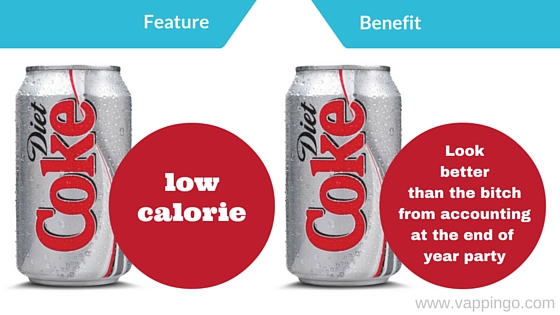B2B selling: How to close sales deals with value selling
If you’re in B2B selling and wish to close sales deals, you need to understand how to sell on value, not on price.
Value selling is certainly not a new concept but implementing it as a sales methodology is still a challenge for companies and organisations that sell their products or services to other companies.
What value selling is NOT
Before discovering what value selling is, let’s see what value selling is not.
Tom Reilly says that value selling is challenging, but not impossible. Discounters shops and powerful chain stores have transformed the word value to a euphemism for cheap.
What value selling is not according to Tom Reilly:
- Value is not bloated, feature-rich products;
- Value is not layers of services that a company offers;
- Value is not a cheap price.
What IS value selling?
In order to increase sales, Brian Tracy, the Sales Guru encourages sales professionals to show their prospects that the value of their products is greater than their asking price.
Selling value instead of selling based on price is also a great method to acquire high-quality customers that are less likely to dump your company the second a better deal presents itself.
Sales professionals should help their prospects overcome two obstacles: fear of change and fear of being cheated. The best way of achieving this goal is by showing their prospects why their products cost what they do and how their products will be a positive change in customer’s life.
Value selling says that customers buy your value or service because they anticipate enjoying a value that they would not have in the absence of your product or service. People don’t buy products, they buy the results the product will give them.
Brian Tracy
Sales experts have defined value selling as follows:
- An outcome;
- The result of your solution;
- Return on investment;
- The impact of your solution on the customer’s world.
Value vs. Price
If sales professionals want to be successful, they must change their perspective on price and see it as part of the product, as one of product’s features – like size, colour, packaging etc.
Why allow yourself to have a sale derailed over a product feature when the real issue is value?
Tom Reilly
If value selling is an outcome, price affects it no more or less than any other product feature. The value of something is determined by what customers sacrifice measured against the outcome of the solution. Sacrifice includes price and ownership costs. Outcome includes what the solution does and how it affects the customer. If the outcome of the decision is greater than the sacrifice, it is great value. If the sacrifice is greater than the outcome, it is lousy value.
Price is a piece of the sacrifice, not the whole of it. At the heart of buying decisions, customers want great value, not just cheap prices.
Tom Reilly
Grant Cardone, international sales training expert and speaker at Brand Minds 2019 notes the following:
using price as your tool is an indication that you need to get back to developing what makes your company a unique proposition.
So if your sales strategy is to rely on your price, you should know that this strategy wouldn’t close the deal. Why? Because there is always a cheaper product or service on the market. Grant Cardone recommends that you spend time determining where you can deliver value that is greater than the price.
Remember, price is a myth. While the buyer may shop the lowest price, it is value that they really want, even during tough economic times. People buy products and services that solve problems. {.} When value exceeds price, price is no longer the issue.
Grant Cardone
Feature selling – Benefit selling – Value selling
To further understand value selling for B2B companies, you need to compare it with two other selling methodologies: feature selling and benefit selling.
Feature selling-Benefit selling
Feature selling means selling a product by describing a physical feature that might appeal to the customer.
Selling a product by its benefits is tied to the feature selling. The salesperson starts by talking about the features of the product and then takes it a step further and shows the customer how this particular feature improves his condition.
Here is a great example:

Value selling for B2B companies
Emotional triggering may work for a B2C selling strategy, but when you are in front of the purchasing manager of a prospect company, you are not selling the result of being more beautiful or skinnier.
The purchasing manager is meeting with you because his job is to seek reliable vendors or suppliers to provide products or services that will help his company achieve its business objectives. Your job as a salesman is to help him understand how your product supports his company achieve that. Value selling is the best sales methodology to help you close the deal.
Let’s take the following example:
You have to sell your company’s CRM software system to a communication company.
You start by describing your product’s features and benefits then you deliver your most important piece of information:
In the past year, your company acquired $1 million worth of customer surveys. Because our CRM software has a powerful survey-focused feature, buying it would mean a $1 million cost reduction for your company. How would you use this money?
In other words:
In B2B is not about ”Show me your smile!”. It is about ”Show me the money” and ”Show me the smile of my clients!”
That means you have to be able to mathematically demonstrate two things:
1. How your product will increase your client’s profitability by increasing his income or decreasing his costs,
and
2. How the clients of your client will be happier if he uses your product in his business model.
Bogdan Comanescu, sales expert
Conclusion
Know your product’s features.
Know your product’s benefits.
Know your customer’s business very well.
Know the financial impact your product has on your customer’s business.
